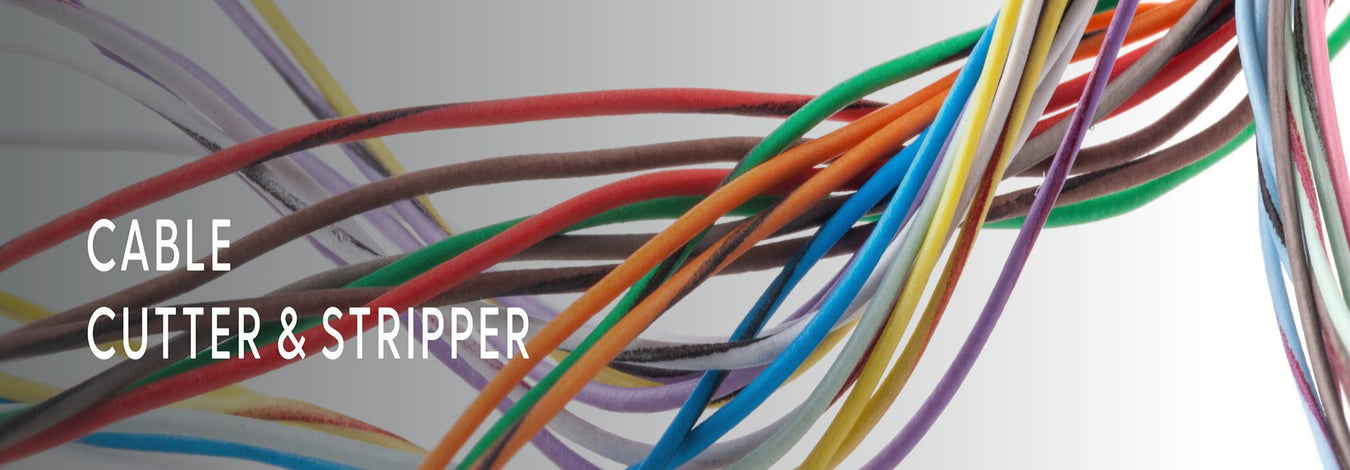
Ultimate Guide on How to Use a Crimping Tool
If you’re into DIY projects related to electronics, jewelry, and plumbing, or you’re a professional in any of these fields, the term crimping may not be new. What exactly is crimping? It’s a process of joining pieces of materials (often metal plates, electrical wires, leather, copper pipes, etc.) together by deforming one or both pieces. You’ll need a unique tool to deform the material and create a secure and permanent connection. That is described as the crimping tool, and the deformed part is the crimp. Usually, crimping is an alternative to welding or soldering.
It’s also worth noting that most crimping tools are multifunctional and can be used to compress, bend, cut, strip, etc. Above all, they work with cables, wires, or pipes of different sizes or gauges.
This post explores categories of crimp tools, various types, and how to use them.
Why is Crimping Considered Better than Other Alternatives?
- It’s a fast and easy process.
- It hardly damages the insulation or components of electrical wires.
- Crimped connections are more heat-resistant, flexible, and vibration-resistant.
What are the Categories of Crimping Tools?
There are five types of crimping tools available in the market based on how they operate. They include:
1. Handheld
These crimp tools are operated manually using hands. Ideally, they’re usually small in size, making them super portable and best for crimping smaller items. Additionally, there are less expensive than crimping tools in other categories. For instance, the IWS-0560B HS Series Ratchet Terminal Crimping Tool and the ASTM F1807 Angle PEX Three Crimper Set.
2. Electrical
Electrical crimping tools are also called battery-powered crimping tools. As the name suggests, they’re electrically powered; thus, they require less effort in applying the necessary pressure than handheld crimp tools. Electrical crimp tools are often available in a wide range of models which suits different requirements. They cost a little more and have better ergonomics than their handheld counterparts.
3. Benchtop
Benchtop crimping tools are usually bulkier, feature higher capacity variations, and are to be mounted on work benches. They’re designed to complete more complex/ demanding crimping tasks. They come in two options, i.e., electric-powered or manually operated. They’re often ideal for industrial applications. A good example is the ICrimp IWS-0801DTS Hex Crimp Bench Mount Battery Cable Crimper.
4. Hydraulic
This category of crimping tools uses hydraulic fluid to provide compression pressure for crimping. Therefore, they require little effort to operate. In addition, hydraulic crimp tools are best for industrial applications and major crimping repairs. For instance, the IWISS Hydraulic Copper Tubing Press Tool Kit.
5. Pneumatic
Unlike hydraulic crimping tools, pneumatic crimping tools use compressed air pressure for crimping. Usually, they deliver significant force, making them ideal for heavy-duty crimping tasks. The ICrimp AM-10 Pneumatic Crimper Plier Machine Tool is a perfect example.
What Types of Crimping Tools are there based on Application?
1. Bootlace crimping tools
Bootlace crimping tools are designed to crimp bootlace ferrules and handle wires of different sizes. They’re often used to prevent the splitting of wires at the screw terminals.
2. Mini crimping tools
They are designed to crimp wires with a small width and require close precision. Some models feature rotatable flip-top heads, making them easy to use within tight operating spaces.
3. Auto electrical crimping tools
They are used to join electrical connectors and cables within car engines. Usually, they feature plier designs which are standard in most tools for working on non-insulated, pre-insulated, ignition, and battery terminals.
4. PEX crimping tools
Cross-linked polyethylene (PEX) crimping tools are used to install and firmly join PEX pipes with steel cramps.
5. RJ 45 crimping tool
It’s a versatile handheld crimping tool that is used to do the actual crimping on CAT5e, CAT6, and CAT7 connectors to attach them to network cables.
Other types of crimping tools include RJ9, Coaxial Cable, splice connections’ and Amp crimping tools.
How to Use a Crimping Tool
Overall, using most crimping tools is pretty straightforward. However, additional steps may be involved depending on the type of connector, terminal, and crimp profile. It’s also essential you know all necessary items needed before starting crimping.
Note: the explanation below is based on a typical cable lug terminal connection.
Items needed for crimping a wire
- A crimping tool
- A wire stripper
- Connectors (terminal lug)
- A cable
- Cable cutter
Step to follow
A. Cut back the ragged ends of a cable
To start with, you need to use a cable cutter (like the iCrimp Wire Cutter for up to 3 gauge wire or the iCrimp Mechanical Cable Cutter VC-60A to cut back any ragged ends of a cable/wire.
B. Strip off insulation protection on the cable
The next step is to strip off the insulation from the cable (take care not to strip the actual wire) using a cable wire/cable stripper like the iCrimp ICP-240 Cable Stripper or the IWISS FSA-0626 Wire Stripper. Often the stripping tool has a reference scale you can use to check the corresponding wire or cable size/gauge.
C. Place the connector onto the cable
Add the lug terminal onto the stripped end of the cable. During this process, ensure that all wires go into the lug terminal.
D. Crimp the lug terminal and the cable
Now apply pressure on the joint where the lug terminal and the cable meet using your crimping tool. You must apply enough pressure, especially when using a handheld crimping tool like the iCrimp HX-50BI Wire Terminal Crimping Tool. It’s advisable that the crimping starts in the middle of the connection toward the cable. More importantly, the crimping die has to be compatible with the terminal lug.
Here is a video showing the necessary tools for crimping and how to do it.
Bottom line
A wide range of crimping tools are suitable for simple crimping tasks and heavy-duty applications. Using these tools is not in any way complex for most people. Are you looking for reliable crimping tools? iCrimp offers various types of crimping tools, from self-adjustable handheld and bench mounted to pneumatic crimping tools for wires/cables and pipes. You can also get top-notch cutters and strippers.
References





